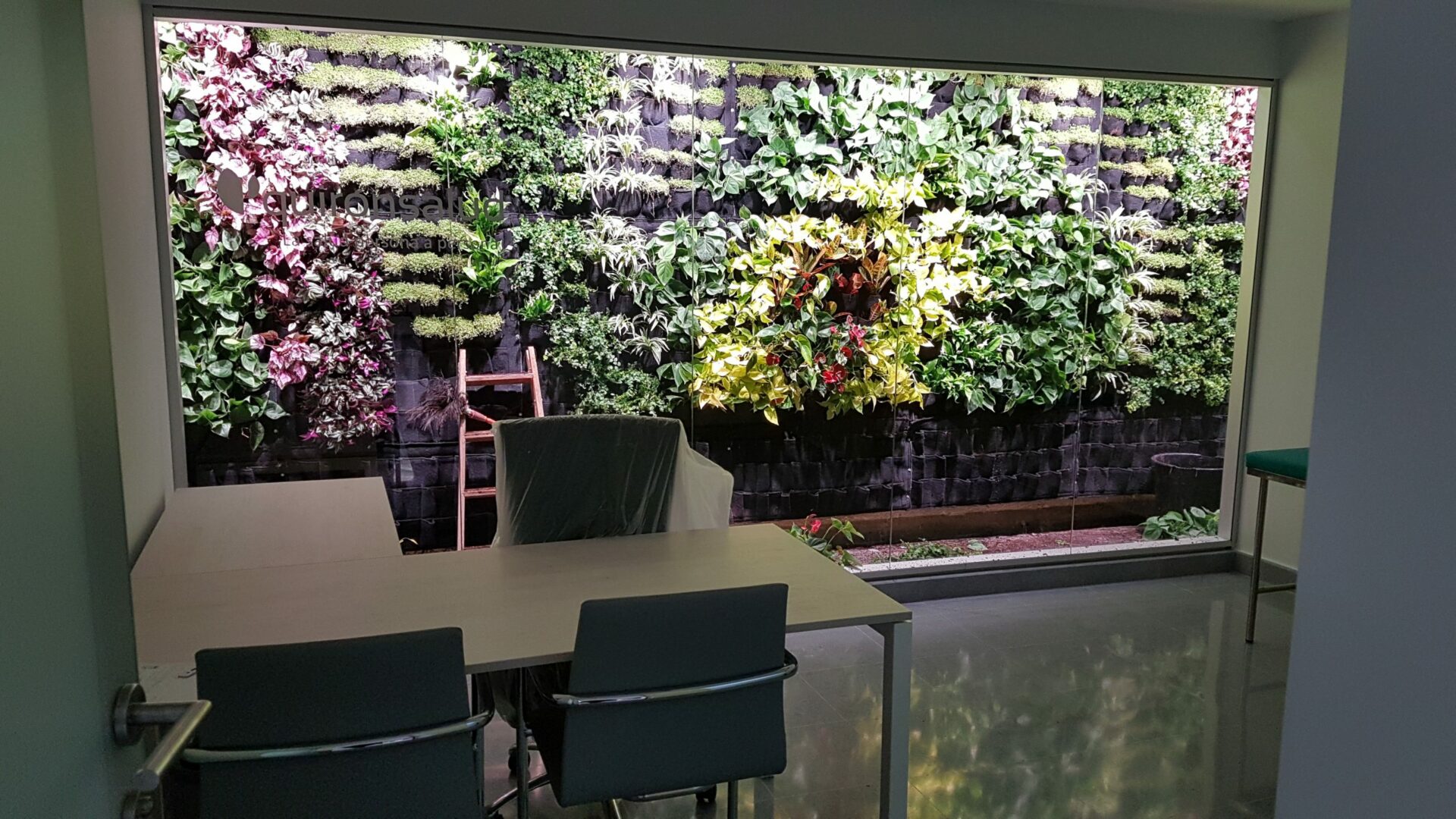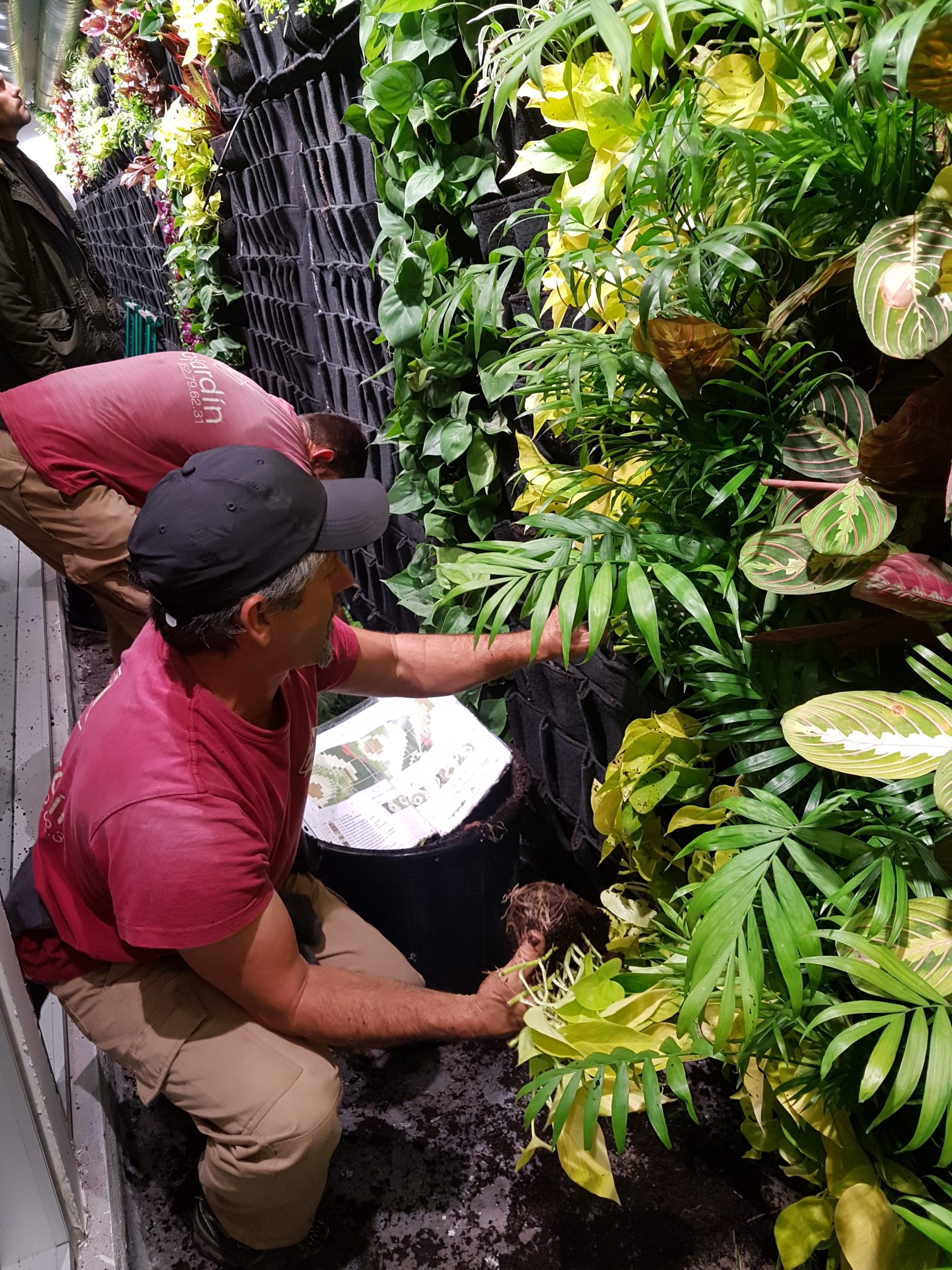Biophilic design is that one who involve the use of natural materials, natural light and plants to create a more sustainable built environment. It focuses on the principle that humans have evolved to work in and with the natural environment over millions of years, so we are not as well adapted to the urban industrial environment that has existed for some 200 years.
The relationship between the natural and man-made environment is being more carefully calibrated with the rise of sustainability and environmental design thinking. Increasingly, architects are embracing the benefits of introducing living systems into their designs.
One concept stands out as the clearest and most literal representation of a sensitive architectural response to harmonious coexistence with nature: the «vertical garden.»
Nature should not be a victim of our happiness, it should be an accomplice (Anonymous).
Why is biophilic design so important for the built environment?
The sustainability aspect of biophilic design is crucial for buildings and living environments. Providing green spaces through water features, abundant plants and natural materials generates a number of benefits, including helping to reduce carbon footprint and regulating temperature within buildings (as we discussed in our last post).
The use of natural materials, such as stone and wood, and ample vegetation are obvious ways to incorporate biophilic elements into an architectural or interior design.
Sustainability and sustainable seals
Nowadays, architecture cannot be separated from the concept of sustainability. Sustainability is presented as the main way of life of the future, therefore, tools that aim to achieve it are currently being developed, such as bioclimatic architecture, eco-design, energy efficiency or biophilic design.
We can create sustainable building surfaces where natural elements connect with people and provide a healthy environment, helping people while caring for the planet.
In order to ensure that a building is sustainable, sustainability seals emerge, which indicate whether legal commitments are enforced, and if so, works that go beyond good design and execution are rewarded with a good reputation.
Biophilia in healthcare environments
The application of biophilic design in healthcare facilities is of special interest. Not only because of the high levels of stress in patients, relatives or workers, but also because they are facilities closely related to the city and its citizens.
At the end of the 20th century, as a result of several studies that related the incidence of a good indoor environment quality and the natural environment on the recovery process of patients, there was a growing concern for the design of healthcare environments that would contribute to improve patients’ conditions.
Hospitals can sometimes be significant elements in the urban planning of a city, generating a great point of interest in their immediate surroundings. For that reason, large hospitals must respond to the needs of the population related to health, not only to sanitation.
The design of these centers must take into account the location where they are located; in many cases it is the first point of relevance due to its function within a city. In many cases, a strategic urban location is sought, but one that also offers the possibility of contact with nature.
The use of natural elements and properties in healthcare spaces is effective in achieving healthy and regenerative effects.
In Terapia Urbana we have been involved in the construction of some vertical gardens in hospital environments, among which it is worth mentioning our link with Hospital Quirón for which we have participated both in the facilities of Seville and Marbella:
- Vertical Garden in Maternal-Children’s Hospital in Seville.
- Vertical garden Quiron Hospital in Marbella, a project that we will talk about in future posts but we share with you this image in which our installer for this project, Agrojardin, is in the process of installing the vertical garden:



